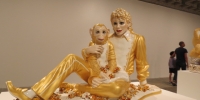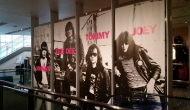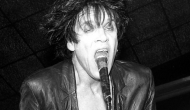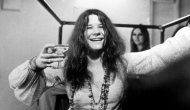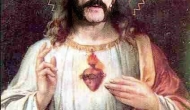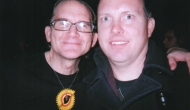Receipt for Lions and Dogs sessions at Leatherwood
Topeka, Kansas in the late 1970s was often a difficult place for musicians writing their own songs. Radio stations only played the hits, and nightclubs tended to book cover bands. Even the arena-rock group named after the state had relocated to Atlanta. But a handful of wayward sons carried on, inspired by the British Invasion and early punk and new wave. Mike Donoho documented much of this music in bedrooms and bathtubs long before digital technology made home recording commonplace. In the process, he helped the regional scene gain wider exposure. Nearly thirty years later, some of the original tapes were rediscovered. They had held up well enough—physically and artistically—to attract attention from reissue labels.
Tunes Crank ‘Em Up
Topeka’s population has hovered around 120,000 since the 1960s. Compared to nearby Kansas City and Lawrence, its music scene has remained smaller over the years. Topeka is home to the state legislature and a small university, Washburn. An air force base closed in 1974. Psychiatry was a local industry of sorts, but the notorious Topeka State Hospital shut down in 1997, and the Menninger Clinic relocated to Houston in 2002. To fill the void, the Westboro Baptist Church got crazier in the new millennium.
Growing up in 1960s Lawrence, Mike Donoho was one of many kids inspired to pick up a guitar by the Beatles’ performance on The Ed Sullivan Show. He played in a few high school bands, and after graduation he went on the road with professional acts playing oldies and current hits. During this time, he began recording his own songs at home. While on tour in 1979, he saw a concert by the Jam in St. Louis, which inspired him to start performing his original music in public. He formed the Tunes in Lawrence, then they went through some personnel changes and a move to Topeka. The longest-serving lineup included Steve Seitz on guitar and keyboards, Pat Wempe on bass, and Mark Woelk on drums. Donoho spent some time working at a gas station while living with his bandmates in a small house, where they made some demo tapes. He eventually got a job down the street at Mother Earth Records and moved into the apartment upstairs, adapting much of it for recording purposes. Guitar amplifiers were tracked in the claw-foot bathtub with a microphone hanging from the ceiling in front of the medicine cabinet. Bass amps sat in the bedroom, while drums were in the living room, where sound could be adjusted by opening or closing the drapes in front of the bay window.
Tunes promotional shot with Donoho in the driver’s seat
Leatherwood Studios didn’t have an official name until later on, but Donoho’s early recordings have been labeled retroactively. “We never really had any professional gear,” he recalls. “Most of the music was recorded on a TEAC A-2340SX reel-to-reel tape deck. About the best microphone we could get our hands on was a Shure SM-58. I later got a Fostex large-diaphragm mic that I used for vocals. I did have a Fostex delay unit we used a lot. It was all mixed through some cheap stereo speakers.” The final products originally ended up on white generic cassettes. The TEAC machine, a quarter-inch four-track, was among the first models built for home recording. It could be used without a mixing board, at some disadvantage. Donoho stretched the capabilities of the deck by bouncing: mixing multiple tracks down to one, then recording additional tracks. “After all that bouncing and tape wear, things could get pretty muddy, so I would try to record things pretty treble-heavy knowing a lot of it would be lost in the end,” he explains.
The homemade demos helped the Tunes make a name for themselves in the region. In Topeka, they became a fixture at a bar called Tony’s Tank ‘Em Up. They also played house parties, one of which generated so much pogo dancing that the soundman had to rush down to the basement and use hydraulic jacks to prevent damage to the floor. Eventually the Tunes were able to rent a hall for local concerts. They traveled to Lawrence, Kansas City, and Manhattan (the one in Kansas) in a converted church bus. Sometimes they played four sets in one night, mixing their original songs with covers of contemporary power-pop bands and the British Invasion. They also opened for Joe “King” Carrasco and the Crowns, Flash Cadillac and the Continental Kids, and many midwestern groups. In 1982, they recorded a single at Chapman Studios in Kansas City. Many of the two hundred copies went to national record labels, but no offers came. Like most regional favorites of the time, the Tunes had gone as far as they could, and were struggling financially. In 1983, they played a series of farewell shows.
Topeka Chain Sex
Formed in 1979, Abuse wasn’t Topeka’s first punk band. The Noise, led by future Iguanas singer-guitarist Kent Wilson, had pressed a single the previous year. Around this time, Topeka native Alan Oliver had moved back from New York City with his group Smart Pills. Oliver had headed east with his guitar a few years before, and through KISS manager Bill Aucoin, joined the band Piper. They recorded two albums for A&M before their main songwriter, Billy Squier, left to start his multiplatinum solo career. Oliver, who had been hanging out at the Manhattan nightclub CBGB, put together Smart Pills. When finances ran low, they retreated to Topeka and played some gigs before deciding to try their luck in Los Angeles. Not long after arriving, Oliver fired his rhythm section, but his trip west would pay off when a publisher licensed his song “No Pictures of Dad” to Josie Cotton. It appeared on her first album, and she performed it on the television show Square Pegs.
https://www.youtube.com/watch?v=B6YgLZarJcs
Guitarist Jamie (Chris) Garner and singer-bassist Clay Galbraith were playing in a cover band early in 1979 when they heard about Smart Pills throwing a party at their practice space downtown. “We figured it would be good for a laugh,” recalls Garner. “Instead, it wound up being the coolest thing either of us had ever seen! We quit the cover band the next day and started looking for a drummer. A friend of Clay’s was a high school teacher who had a student that was into punk, and that’s how we met Willie McNeil.” Unable to find gigs in Topeka, they traveled to Off the Wall Hall in downtown Lawrence and the Downliner in Kansas City’s Westport neighborhood. The Downliner originally had concerts upstairs, then relocated to the basement for more space. The members of Abuse helped the owners, Pam and Craig Travitz, build a new “bar” over a two-by-four supported by two empty kegs. “It was a dump,” Garner says, “but goddamn, it was beautiful. When the owner of the building saw how successful it was, he raised the rent, so Pam and Craig moved down the street to the Music Box and we went with them.”
Abuse at Off the Wall Hall, 1981
Abuse got some international exposure in 1981 when their three-song flexi-disc was included in a Lawrence fanzine, Talk Talk. This record was the first release on the Fresh Sounds label, which soon eclipsed the fanzine and continued throughout the 1980s with a roster including author William S. Burroughs and cult bands such as the Micronotz, the Embarrassment, and SPK. Donoho recorded Abuse in a basement, his gear being more portable than a professional studio’s. He borrowed the band’s six-channel Tapco mixer and Shure SM-57 microphones. McNeil recalls, “My cymbal had a huge crack in it, so every time I hit it, it had no sustain!”
Alan Oliver had returned from Los Angeles in 1981 after his wife was injured by a car jumping the curb. While she recuperated at her parents’, he invited the members of Abuse to back him in the misleadingly named Carlton Page and the Bentleys. They recorded a demo at Donoho’s house, and then the Olivers were ready to go back west. On the way, Garner remembers passing the Leatherwood Bar and Grill in Arizona. The trip that gave the studio its name also ended Abuse. As Garner puts it, “After a few showcase gigs and meetings with sleazy-looking managers didn’t pan out, Alan fired us. Since he’d fired the Smart Pills too, we were in good company at least.” Garner headed home. Galbraith had found a good job, so he stayed for a while. McNeil cofounded the punk-jazz band Tupelo Chain Sex, then toured and recorded with Joe Strummer from the Clash. He continues to play professionally in Los Angeles. Oliver is now known as Will Ivy and lives in Austin, where Smart Pills held their thirty-year reunion.
By the Way, Which One’s Archie?
Shortly before the Tunes broke up, they made one last home recording that sounded very different. “It Wasn’t There,” featuring distorted snake-charmer guitar, ended up on Psychic Archie’s first cassette in 1984. Donoho, who by this point had acquired an eight-channel mixing board from a church, had more songs ready to go. He encountered Garner, back from Los Angeles, who called drummer Kirk Morris. The trio did some recording, but lacked motivation at first. Then Galbraith returned to Topeka, and the four of them realized they sounded good together. When a local country-music station announced a battle of the bands that would be broadcast live, the new group had to come up with a name right away. According to Garner, “We talked about wanting to sound like the Archies on acid, but we didn’t want to use Psychedelic because of the Psychedelic Furs, so Psychic won out. I think we toyed with calling it the Leatherwoods, but decided it sounded too country.” They finished second in the contest, which earned them some gigs in Topeka. They released a cassette that included a version of “No Pictures of Dad” closer to the original than Josie Cotton’s.
Psychic Archie began to attract a following in Lawrence (where they opened for Hüsker Dü) and Kansas City. They recorded a second cassette in 1985, and made a music video for Garner’s song “NSBL.” The director, Brenda Haverkamp, worked for television stations in Topeka, which gave her access to professional cameras and lighting gear. Some of the shooting took place at a bar that, according to Garner, “had been shut down in the early 1960s after a bunch of people got murdered in the parking lot, and everything was still there untouched—all we had to do was clean the dust off. We used the tunnels and ballroom at the State Hospital too, which was creepy cool in a Shining sort of way. It’s a really goofy video, but I don’t think any other band from Topeka made one, so that counts for something.” Haverkamp’s connections led to the video being broadcast “at the oddest times.”
Psychic Archie in the Mother Earth Records newsletter
By 1986, Psychic Archie’s cover of the Starfires’ “I Never Loved Her” had become the opening track on the Fresh Sounds from Middle America compilation album. Record label representatives were rumored to be interested in a show at the Bottleneck (formerly Off the Wall Hall). “The place was packed,” recalls Donoho, but the band got so stoned beforehand that “we pretty much sucked all night.” Not long after, Donoho injured his arm. Psychic Archie played one last gig with a substitute singer-guitarist, Todd Newman, whose band Lions and Dogs recorded at Leatherwood and appeared on the Fresh Sounds album. Garner ended up moving to Minneapolis with Newman and starting a group unsurprisingly called the Leatherwoods, who collaborated with Paul Westerberg from the Replacements. Garner later backed up New York punk pioneer Sonny Vincent and started his own home studio. Newman still records and performs periodically.
Not long before Psychic Archie broke up, Donoho bought an eight-track Otari tape deck on which the band started recording new songs. The studio had become busier during the Archie years, and remained open for a while afterward. A band called the Students, who attended Washburn and described themselves as “new wave sixties pop,” made some demos there. Steve Seitz from the Tunes stopped in at some point, as did various singer-songwriters. The studio also documented church sermons, piano lessons, and advertising jingles.
Every Talking Dog Has Its Day
Donoho relocated to Branson, Missouri in the late 1980s with the hope of becoming a professional country guitarist: “I needed to make some real money. I was well into my thirties, and I had become disillusioned with the whole band thing. It was time to sell out.” At the Roy Clark Theater, he started out doing monitor mixes and substituting on guitar for the opening act. When the main soundman got fired after a drunken binge, Donoho took over, and eventually found himself hurrying back and forth to mix sets at the neighboring Mickey Gilley Theater. He appears in the credits for concert recordings by Clark, Johnny Paycheck, and Faron Young. “Needless to say,” he remembers, “I never mentioned the Tunes, Psychic Archie, or Leatherwood Studios in this world of country-music icons.”
In the mid-1990s, Donoho opened the Guitar Shop, initially a retail outlet but currently focused on repairs. Three years ago, he returned to power pop in an unusual way. Todd Oliver, a ventriloquist who uses “talking” dogs along with wooden puppets, expanded his act to include a band called the Smiling Eyes. One of Branson’s few original rock groups, their songs explore the more serious themes behind Oliver’s comedy. Says Donoho, the lead guitarist, “It’s a family show, but I have never seen anything like it.”
Smiling Eyes
Over the decades, the early sounds of Topeka’s underground continued to make ripples. Killed by Death, a series of 1990s bootleg albums compiling obscure punk singles, included Abuse’s song “In America” and “Let’s Have Some Fun” by the Noise. Blurbs about the Tunes appeared in various music blogs. In 2013, a stash of Leatherwood reel-to-reel tapes was unexpectedly found by someone who prefers to remain anonymous. The Austin-based blog Cheap Rewards, which doubles as a reissue record label, arranged to release a Tunes album, Love Uncool, consisting of the early demos and the tracks from their single. A Rome-based reissue label, Rave Up, will soon press an Abuse single with a bonus song.
Remastering the old tapes was a tricky process. Donoho converted the tracks to digital, but his mixing software proved inadequate. Garner took the raw files and posted mixes online using Dropbox, then adjusted them based on Donoho’s comments. As Garner explains, “We couldn’t hear it at the time because of the poor quality of the monitors, but there was a bad channel on the board that sent a constant high-frequency clicking noise to the deck. It was too high for the cassette tape to reproduce too, but damn, it was loud as hell on modern gear. That was a real pain to get rid of. The bass and drums shared a single track, and trying to get some growl on the bass guitar without making the snare sound boxy was a lot of work. Trying to get the cymbals to sparkle when the mic used to record them had no sparkle kinda sucked too, but the tracks turned out pretty well, all things considered.”
Because Psychic Archie never released vinyl back in the day, they remained unknown to collectors and had to finance their own reissue. Their upcoming compact disc will contain the songs from the cassettes and one bonus track. Live footage of the band will appear in a documentary about the Outhouse, a legendary all-ages venue in Lawrence. A YouTube clip of them playing unplugged in Donoho’s apartment is the only surviving photographic evidence of Leatherwood Studios.
**You should follow Shea Magazine on Twitter HERE!**
**If you liked this article you should share it!**
Ben Easher
Raised by East Coast parents in the Midwest, Ben Easher has been in the Northwest since 1988. He currently lives in Portland, and still plays guitar and drums. (Photograph by Holly Homan.)
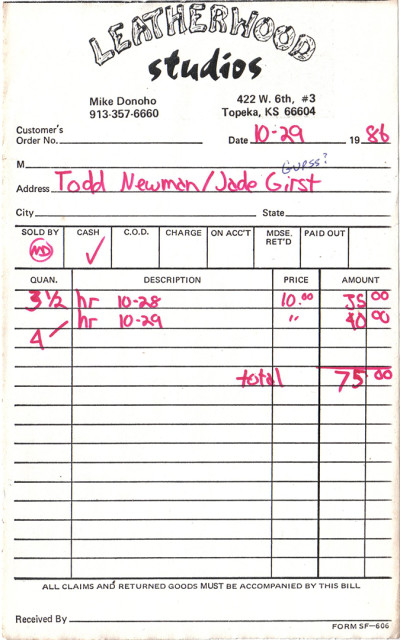
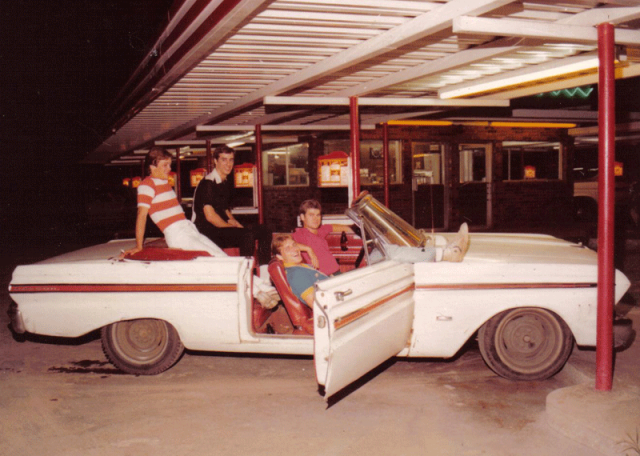
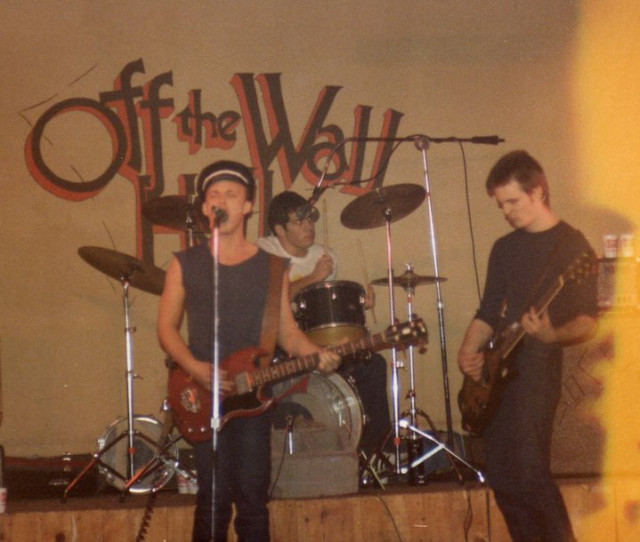
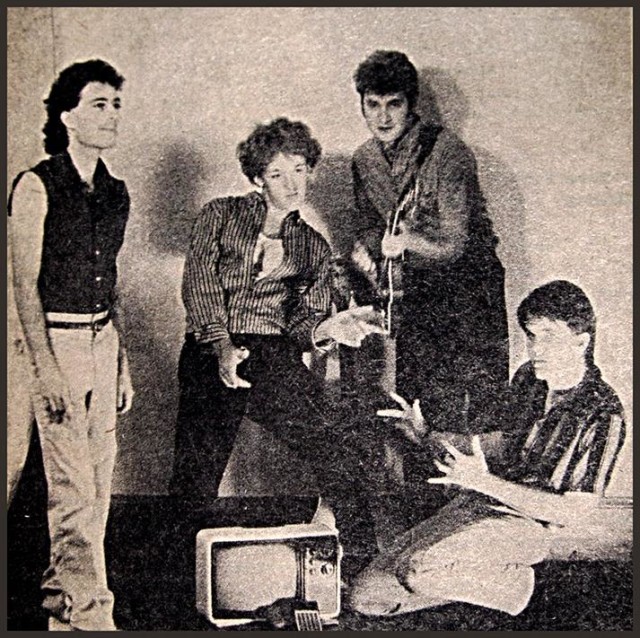
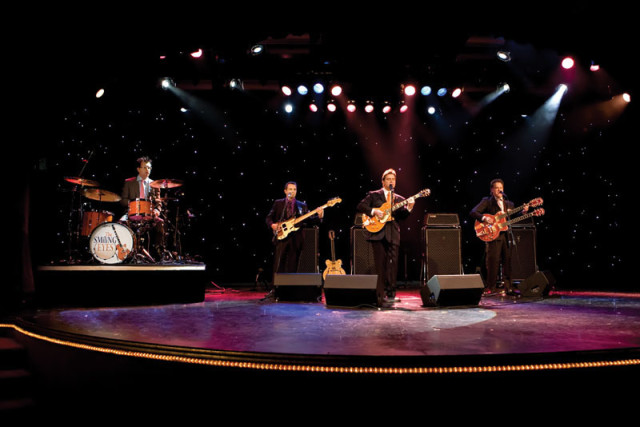


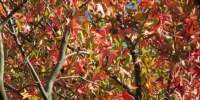
![Let's Go to the Empire State Building - Shall We? [PHOTOS]](https://sheamagazine.com/wp-content/plugins/special-recent-posts-pro/cache/MjAwMTAwbm9JTUdfMzkxNjE=.jpg)
![Scenes from Washington Square Park - NYC [PHOTOS]](https://sheamagazine.com/wp-content/plugins/special-recent-posts-pro/cache/MjAwMTAwbm9JTUdfNDA1Mg==.jpg)
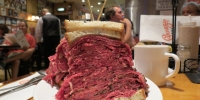
![Sunset - Pelham Shore Park - Long Island Sound [PHOTOS]](https://sheamagazine.com/wp-content/plugins/special-recent-posts-pro/cache/MjAwMTAwbm9JTUdfMzM3MC1SRVNJWkU=.jpg)
![Let's Go to Chinatown, Shall We? [PHOTOS]](https://sheamagazine.com/wp-content/plugins/special-recent-posts-pro/cache/MjAwMTAwbm9jaGluYXRvd24tMi1idy0=.jpg)



